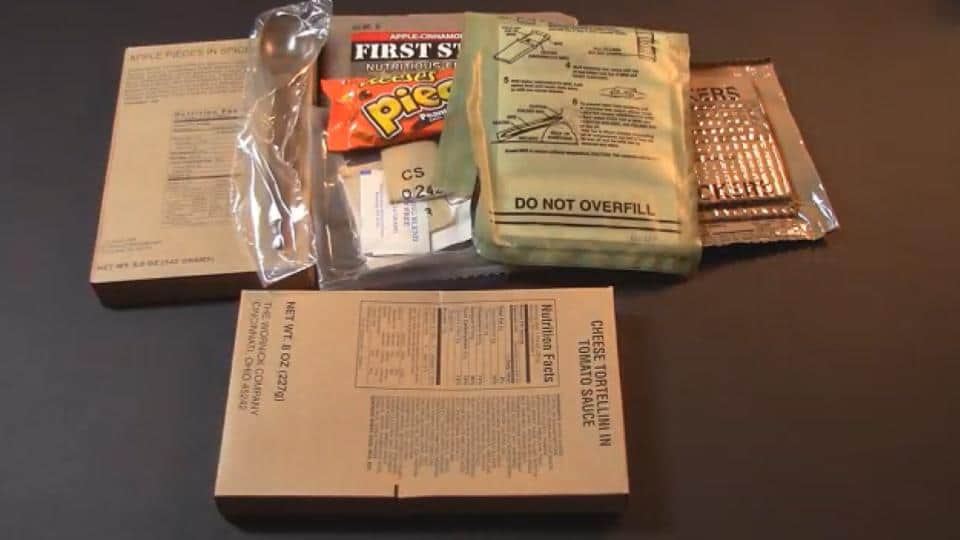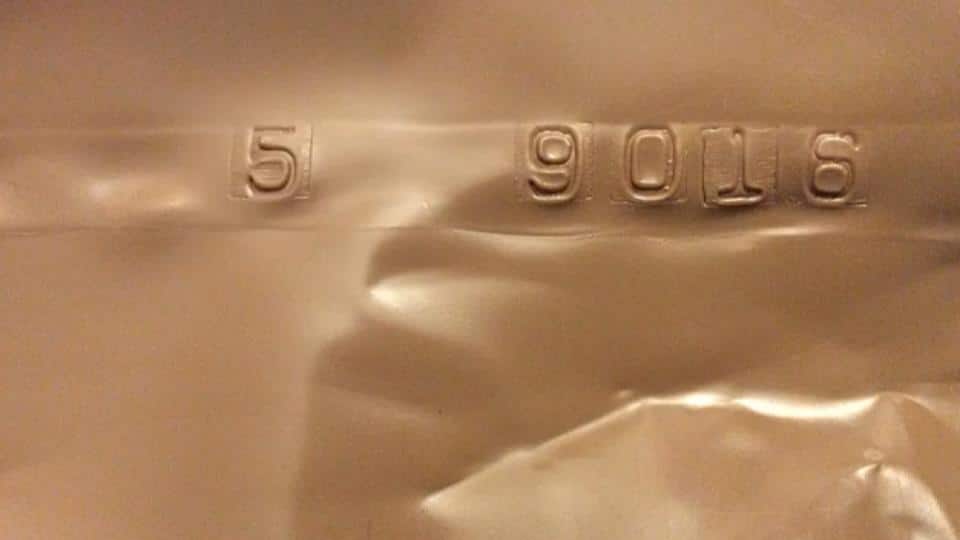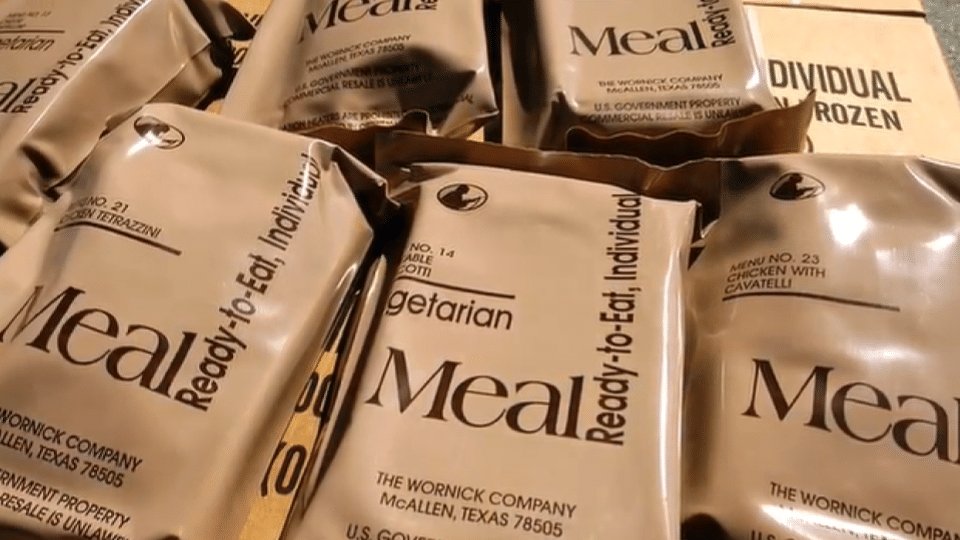This site contains affiliate links. As an Amazon Associate, I earn a commission from qualifying purchases at no extra cost to you. Full Disclosure Here.
Preparedness is key to survival in case of emergencies. While you will need many things, one of the essentials is food. Among others, a must-have is an MRE or meal ready to eat.
Technically, MREs are manufactured only for military ration. Nonetheless, many companies market similar products to preppers. If you have one at home, you are probably wondering – how long do MREs last?
The lifespan of MREs depends on several factors. You can make it last longer through proper storage and handling.
Read on as we talk about its shelf life, as well as tips for making it longer-lasting.
What Are MREs?
MRE stands for Meal, Ready-to-Eat. It is a self-contained, shelf-stable, and field-rationed meal in lightweight packaging that the U.S. Department of Defense distributes to its members. When a regular food supply isn’t available, such as on battlefields, MREs save the day. While it is originally for military use, it can also be given to civilians in case of disasters.
Accessibility is the biggest selling point of MREs. It is convenient since they are pre-cooked and packed in a sealed pouch to preserve freshness over time. This is similar to canning, except that it is a lighter packaging that is easy to use.
In a typical MRE, you will find almost everything that you need for a filling meal. It has an entrée, side dish, bread, spread, dessert, seasoning, and even sweets. Utensils are also included in the package.
Take note, however, that it is illegal to resell MREs that are made for military consumption. Nonetheless, you can now find many civilian versions at online shops. They are similar to military MREs, except that they are made by private companies instead of the government and are meant for public consumption.
How Long Do MREs Last?

MREs do not have a definite shelf life. The expiration depends on many factors, with the most significant being the storage condition. The temperature has the biggest impact. If you want it to last longer, then store it in a cool environment.
On average, an MRE can last up to five years if you store it at 75 degrees Fahrenheit. However, if you store it in a cooler space, then the shelf life can extend up to 10 years. It can even last up to 20 years in ideal conditions. On the other hand, if it is hotter, specifically when the temperature is 120 degrees Fahrenheit, an MRE won’t last more than one month.
How to Tell If MRE Has Gone Bad

The best way to check if an MRE has gone bad is to look at the date stamp on the packaging. However, unlike conventional packaged food, MREs do not typically have a stated expiration date. This is because it has an indefinite shelf life that is dependent on its storage.
Instead of having the expiration date stated on the packaging, what you will most often find is the manufacturing date. However, MREs do not have the conventional format stated as date, month, and year. You will find several numbers and codes, and you must know what they mean.
Many MREs will have what is called the Julian date. The first digit is the last digit when the MRE was manufactured or packaged. Meanwhile, the next three digits represent the day of the year. For instance, if you see 5175, then it means that it was made in 2015. 175, meanwhile, means that it was made on the 175th day of the year out of 365. Meaning, the manufacturing date was June 24, 2015.
In older MREs, you will find a time and temperature indicator or TTI. It is a small sticker that indicates freshness. It has a larger circle, which is usually black or maroon. The inner circle has a lighter color. Once both circles have almost the same color, take it as an indication that the MRE has already passed the shelf life that the manufacturer recommends.
Aside from the manufacturing date and time and temperature indicator, below are other indications that an MRE has gone bad.
Damaged Packaging

To extend the shelf life of MREs, it has vacuumed-sealed packaging. This protects it against external elements that can speed up spoilage. When it has a tear or any other visible damage, it is best to avoid eating it.
Food Looks Spoiled
Once you open the MRE’s packaging, take a closer look at the food. If it has significant discoloration, do not eat it. Some can also develop molds and other tell-tale signs that it is no longer good to eat.
Rancid Smell
Even if the food looks good, it does not instantly mean that it is safe to eat. Smell the food to see if it is spoiled. There can be a rancid smell or foul odor, which is another indicator that it is no longer fit for consumption.
Making MREs Last Longer
MRE is a survival food item with long shelf life, but below are some of the best practices for MRE storage to make it longer-lasting and ensure its peak quality even through the years.
Keep It Cool
The most common culprit for MRE spoilage is heat. Watch out for the temperature in its storage space. Keep it in a cool and dry place. Even if it is made to have tough packaging, significant heat can result in deterioration. The cooler it is, the longer the MRE will last.
Do Not Freeze
While we recommend storing the MRE in a cool space, freezing it can do more harm than good. Freezing can cause the packaging to deteriorate since the contents can expand. When this happens, it is prone to penetration of external elements that speed up spoilage.
Keep Away from Sharp Objects
If possible, store MREs only with similar items. Keep it away from knives, scissors, or any other sharp objects that can tear the packaging. Even the slightest prick can damage the packaging and spoil the food quicker.
Consume Once Opened
MREs can last a long time once they are in sealed packaging. However, as soon as you open it, the shelf life is similar to any other food. Open the packaging only once you are ready to eat. Consuming it immediately guarantees its freshness.
How Do You Extend Your MRE Shelf-Life?
MREs have been around since 1975, when the United States Army first introduced them as an alternative to canned food and other non-perishable items available at that time. MREs first field use was in 1983. Since then, they have become a staple among campers, hikers, and preppers alike due to their diverse selection of menus and long shelf lifetimes.
So when do MREs expire? You can store MREs for up to ten years, but you should know that there are a few things you should keep in mind. These include:
Keep Your MREs Cool, Dry, and Dark
The cooler they are, the better they’ll last. Store MREs at temperatures below 75 °F (23 °C) if possible. If it’s impossible to keep them in a cool place, store them out of direct sunlight and away from heating vents.
Keep Your MRE Pouches Inside Their Original Packaging
Please do not remove the pouches of MREs from their plastic bags until it’s time to eat them because this helps keep moisture out of the packaging, which could cause spoilage over time. Don’t leave open packages exposed to prolonged sunlight either, as this will speed up spoilage, so make sure everything stays sealed tight until it’s time for consumption.
How Do You Know When to Replace Your MREs?
The biggest problem with MREs is when they’re damaged in transit or storage—the packaging can become punctured or torn, allowing air and moisture into the bag and causing it to swell up with water vapor and begin to smell like mildew.
There are a few ways to check whether food has turned bad. The first is to look for bulging or bloated packaging: if it looks like it’s about to burst, don’t eat it. Also, check the sell-by date. If the food smells rotten, then chances are that it is rotten.
You can check if the food is slimy or moldy on the surface. Mold grows in a tiny amount of time and will spread throughout the entire product in no time at all. It is always best not to buy items with any odor.
When Should MREs Be Used?
People often ask, “Do MREs expire?” Yes. The Best By date is usually five years from when they were manufactured, and MREs can withstand just about any emergency, from hurricanes to power outages to earthquakes.
The manufacturers make this possible through vacuum-sealed packaging, which keeps oxygen out and moisture in. This method keeps everything—including the nutrients and flavor—intact. All the food in them is dehydrated, making them last longer than a fresh lunch, but not indefinitely.
Also, remember that the shelf life of an MRE depends on its contents and condition. If you’ve got one with a “Best by” date five years in the future, but you can store it in 100-degree heat, it might only last two years instead of five. Some people use their MREs as backup food or as part of a 72-hour bug-out bag kit, while others keep them around as a last resort.
Making Sense of MRE Date Stamps
MREs use the Julian date code. This code was developed so that military personnel could precisely tell how old their MRE foods were, even if the food had been in storage for years.
So how does it work? The first number of the Julian date code indicates which year it was packed in the current decade, and the following three numbers identify which day it was packed in the current year.
The last three numbers in the Julian date are based on a method of counting days called “Julian days,” and it begins with January 1 as day one (001). Each day after that gets a new number until December 31, which becomes day 365. Then it starts over with day one again on January 1.
This method means that every four years, we get an extra leap day (February 29), which is why every 4th year has 366 days instead of 365. Therefore, 0023 means January 23, 2020. “0” stands for 2020, and “023” stands for January 23.
How to Calculate MRE Shelf Life?
You can calculate the shelf life of MREs by dividing the number of years by the number of days in a year.
For example, if you wanted to know what the shelf life was for a case of MREs with a date coded October 1, 2026, and you have determined that it is an average daily temperature of 70 °F (21 °C), then your calculations would look like this:
2026/365 = 5.55 years (which means that this case could last almost six years)
FAQ’s
Technically, yes, you can eat expired MREs. However, it is best to do so only if you have no other option. Also, pay attention to the physical condition of the packaging and the food before its consumption. If it is highly evident that it is already in poor condition or if the food no longer looks and smells good, then do not eat it.
In most cases, nothing will happen to you if you eat expired MREs. They are made to last a long time, so food poisoning is unlikely. Expired MREs may have a negative impact on taste and nutritional value but seldom on their safety. Nonetheless, if it was exposed to external elements, such as heat and humidity, then the effects can vary from one person to another.
As with any food, proper storage of MREs is the key to maximizing their shelf life. The elements that accelerate spoilage are oxygen and light, so keeping your MREs in the dark and cool place under 75 °F will help them last longer.
Open up the MRE bag and look for a plastic bag labeled with “heater” this is the heater pouch you will use to heat your meal in. To use the heater, fill it with water until it reaches the fill line. After you put the entrée in the package, let the heater sit for a minute so it can heat up. You’ll have a hot meal in a few minutes by propping the heater up with the entrée.
The shelf life of MREs depends on the storage conditions. Military MREs are prepared in factories and sealed for long-term storage. The packaging is made of heavy-duty water-resistant plastic and can be stored comfortably at room temperature. The average shelf life of most MREs is five years or more if stored under 75°F.
As a general rule, the cooler you store your MREs, the longer they’ll last. They can last well over ten years if stored at freezing temperatures.
Final Words
MREs have a long shelf life, which depends on their storage conditions, specifically the temperature. If it is at 75 degrees Fahrenheit, it can last up to five years. In a cooler environment, it will stay good for up to ten years. Meanwhile, when it is hot, it can last only for one month.
We hope you now understand how long MREs last and how to use them in your prepping food stash. We know that this information can sometimes be overwhelming, but with these tips and tricks, you can have an abundant supply of food that lasts years off the grid.


